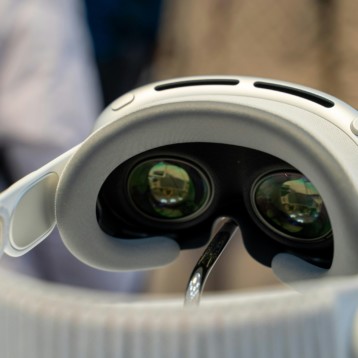The ballonet is a gastight bladder of aluminium-vaporised “PET foil”, and it can be filled with up to 1.6 cbm of helium. Since 1 cbm of helium generates approximately 1 kg weight of buoyant force, Air ray’s overall mass must not exceed 1.6 kg. The researchers said that since the density of water is significantly greater than that of air, their invention required a particularly delicate and light construction. “It enables Air ray to almost hover in the air by means of the buoyant force of the helium ballonet, floating through a sea of air just as the Manta ray does in water”.
The wing module of the flapping-wing mechanism can be moved up and down by a servo drive unit, which has a structure like that of the tail fins of many fish. The propulsion is affected by this mechanism, and is based on a concept named “Fin Ray Effect”, developed by Leif Kniese. The structure consists of two alternating pressure and tension flanks flexibly connected by ribs. When one flank is subjected to pressure, the geometrical structure automatically bends in the direction opposed to the force applied. In the “Air ray”, a servo drive unit pulls on the two flanks longitudinally in alternation, thus moving the wing module up and down.
The scientists say they have succeeded in achieving a structure that closely approaches the biological model’s movements – “it can even execute birdlike light maneuvers” – they said.
“Air ray” can be used to transmit camera images in real-time and diagnosis of its operating parameters can be transmitted in real time. Festo says this project demonstrates how nature can serve as a model to inspire new technological solutions, particularly in the field of automation. One of the primary areas of research and development in the company is automation – TFOT has recently covered a different project developed by Festo’s called “Airic’s Arm” – a bionic arm, operated by “Fluidic Muscles”.
You can watch a video, which demonstrates Festo’s Air ray here, and find more information about this device here. A video of the aqua-ray can be found here.










